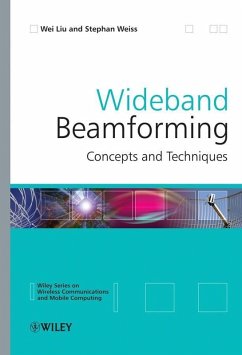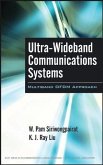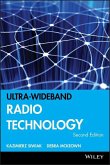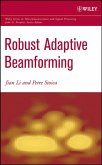This book provides an excellent reference for all professionals working in the area of array signal processing and its applications in wireless communications. Wideband beamforming has advanced with the increasing bandwidth in wireless communications and the development of ultra wideband (UWB) technology. In this book, the authors address the fundamentals and most recent developments in the field of wideband beamforming. The book provides a thorough coverage of the subject including major sub-areas such as sub-band adaptive beamforming, frequency invariant beamforming, blind wideband beamforming, beamforming without temporal processing, and beamforming for multi-path signals. Key Features: * Unique book focusing on wideband beamforming * Discusses a hot topic coinciding with the increasing bandwidth in wireless communications and the development of UWB technology * Addresses the general concept of beamforming including fixed beamformers and adaptive beamformers * Covers advanced topics including sub-band adaptive beamforming, frequency invariant beamforming, blind wideband beamforming, beamforming without temporal processing, and beamforming for multi-path signals * Includes various design examples and corresponding complexity analyses This book provides a reference for engineers and researchers in wireless communications and signal processing fields. Postgraduate students studying signal processing will also find this book of interest.
Dieser Download kann aus rechtlichen Gründen nur mit Rechnungsadresse in A, B, BG, CY, CZ, D, DK, EW, E, FIN, F, GR, HR, H, IRL, I, LT, L, LR, M, NL, PL, P, R, S, SLO, SK ausgeliefert werden.









